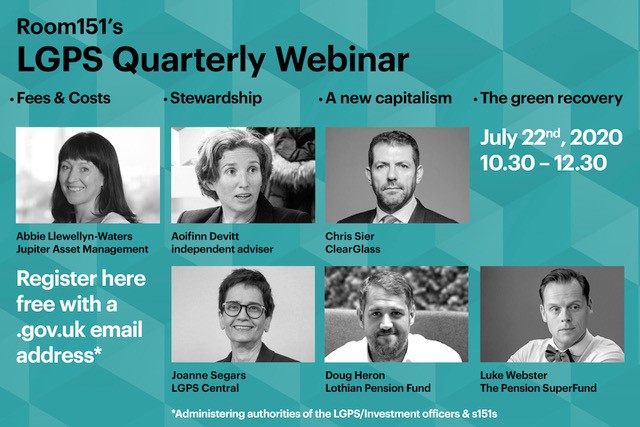
Sponsored article: Pat Sharman of CACEIS reveals the work behind a service that shines a light on costs in the Local Government Pensions Scheme.
Room151: When and why did you launch your Cost Transparency initiative?
Pat Sharman (PS): We launched the UK’s first pension scheme cost reporting service and dashboard back in 2017, looking to leverage off our experience in the Dutch market. We identified the same challenges in the UK as we did in The Netherlands, so we decided to invest in a solution that would have the same high governance standards as the Dutch model, but tailored to meet the specific requirements of UK schemes, including meeting their own internal governance requirements.
Initially, we had a trial period during 2016 working with three leading UK defined benefit schemes. We then launched the product to the wider market in 2017. Today, we have over four years’ worth of data and the ability to look at how this cost data trends over time. In 2017 we reported on a total of £3bn in assets under management. Since then, we have conducted cost transparency reports on more than £225bn in UK assets under management.
Commitment
Room151: Why is cost transparency important for local government pension schemes?
PS: As a public service pension scheme, local government pension schemes have a particular interest in being transparent and efficient when it comes to costs. Cost transparency is a topic that the local government pension scheme advisory board takes very seriously. The LGPS code of transparency was designed for this very reason. Asset managers are able to sign up to “the code”, an agreement to publish cost data in a standard format on request, in order to demonstrate their commitment to the transparent reporting of costs.

Having a cost transparency programme enables LGPS to better understand their total cost of ownership. This includes gaining full transparency on both their investment costs and pension management costs.
When we first started work on cost transparency, our research suggested the investment cost of running a pension scheme was two to three times higher than previously reported in various annual reports and accounts.
These were not new fees—they were always there, but they were never reported in the past. We believe that a good governance model, and a robust framework for collecting, identifying, analysing and reporting can reveal areas that pension schemes have either overlooked, or missed, when reporting on cost information in the past.
We currently work with Brunel on collecting and reporting costs, and we’ve also worked with LGPS Central. We are also in the process of on-boarding another local authority scheme for our cost transparency solution.
Collection process
Room151: How do you go about collecting the data on a cost transparency project for local government penson scheme pools?
PS: First, we begin by cleansing and refining the cost data on the assets and sub funds, including the Authorised Corporate Director costs. Next, we finalise the data we have received for each investment in the format of CTI templates on the schemes’ behalf. Then we provide support on the uploading and formatting of the CTI reports onto the Byhiras system. Byhiras aggregates cost transparency data for all local government pension schemes and pooling vehicles on behalf of the Scheme Advisory Board.
Finally, we report back on the total cost exposure at both a pool and sub fund level. And, to keep things flexible, costs can be reviewed either at an aggregate level or at an individual level.
We follow the same robust process for individual LGPS schemes, and report costs at total scheme level, individual mandate and/or service provider level.
Room151: How important is the process that you follow?
PS: It’s vital. We spend a great deal of time validating the data to ensure its accuracy. There is a real emphasis within our operation to ensure the quality of the data is as high as possible, and all costs are accounted for.
This is driven by a combination of technology, which efficiently identifies and maps all the templates to the new CTI, and a team of on-the-ground UK analysts with “hands on” experience of working on cost data on a daily basis.
These two factors have helped us achieve a 99% success rate in collecting cost data. To quote an oft-repeated adage, we strongly believe that you can’t “effectively” manage, what you can’t “accurately” measure.
Room151: How do you bring this information to life?
PS: We’ve built a service and data visualisation dashboard that collects all the cost data from the asset managers and various service providers employed by the pension scheme. This helps asset owners confidently understand the bottom-line cost figure of running their schemes, and how these costs can be attributed.
We also collect the net return for all mandates, which assists with assessing value for money. Once we are confident everything is accounted for, we build out bespoke on-line reports, board reports and power point presentations for the pension scheme’s internal teams, committees and boards.
Room151: What’s the next step in terms of cost transparency?
PS: With more and more data becoming available, we’re now starting to better identify the nature of these costs, how they trend over time and how asset manager selection, or asset allocation, can impact the overall fees and resulting returns of pension schemes.
The next step is ensuring that this data is appropriately used and empowers the pension schemes in better managing costs and in their value-for-money assessments.
Pat Sharman is UK managing director of CACEIS.
FREE monthly and weekly newsletters
Subscribe to Room151 Newsletters
Monthly Online Treasury Briefing
Sign up here with a .gov.uk email address
Room151 Webinars
Visit the Room151 channel











